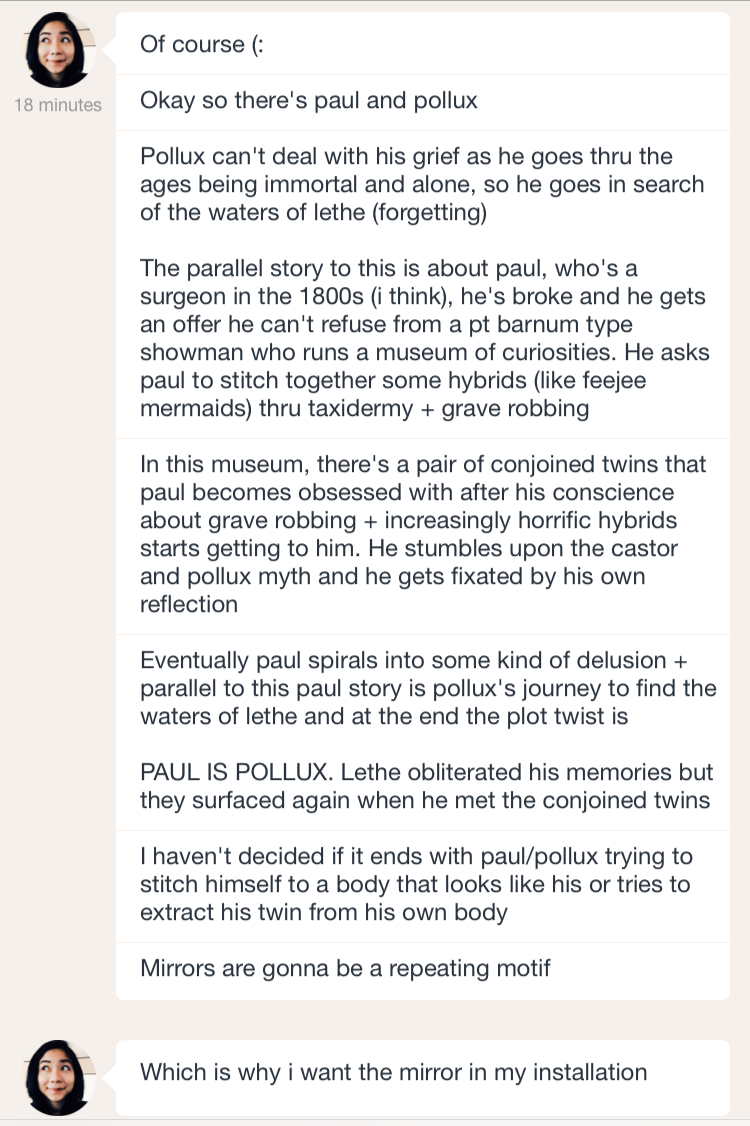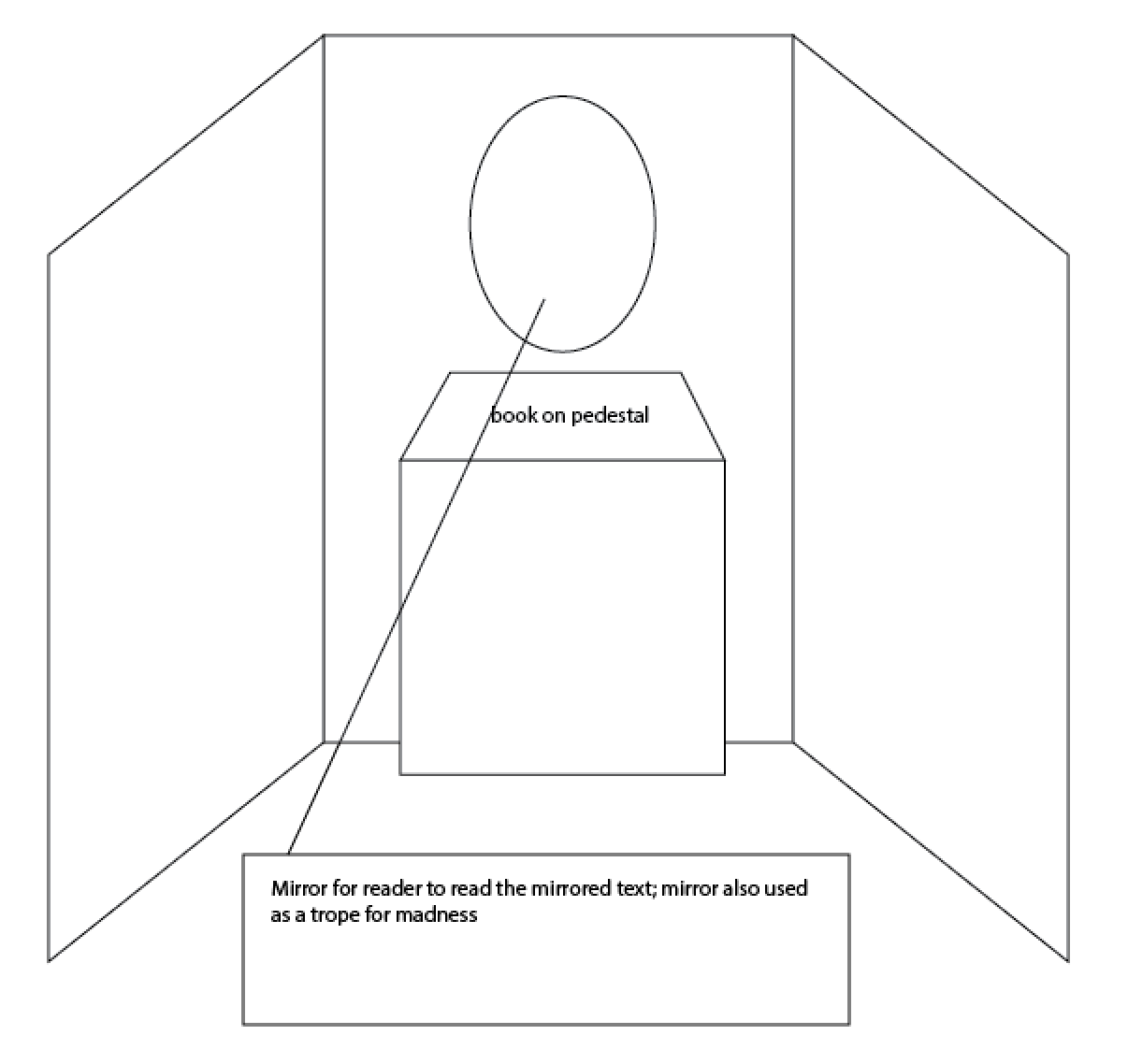As promised, I’m spending December ironing out my content and approach for FYP, and I’ve narrowed my deliverables down to these three things: a book containing a narrative, the gallery space as an installation relating to the book’s narrative and a process book (thanks for the advice, Beverley!).
At the moment I’ve been focusing on the narrative the most because it’s the centerpiece of what I’m doing. I’m doing a kind of homage to Greek mythology, to House Of Leaves and to all the good literature that has influenced me over the years, while bringing in my illustrations/skills in layout design to complement the content. I haven’t figured out the visual style precisely yet but my aesthetic has been heavily influenced by The Sick Rose and Crucial Interventions. It’s very likely that the book will be hardcover, but I’m not clear on dimensions yet. Here’s the narrative, from one of my brainstorming sessions with B:
This is the story, which I’m working on now. My ideas are best explained over text to B, because I’ve spent most of the FYP period talking to him about my project. This narrative lets me bring in aspects of the Castor and Pollux myth as well as the larger canon of Greek mythology, and gives me an avenue for illustration (I can draw all the hybrids) and grotesque/freakshow ideas that I researched on earlier in the semester.
Here are my initial thoughts for the setup:
The idea is that while the reader is following the stories of Paul and Pollux, they’re standing in front of a mirror, which (as mentioned in the screenshot) will reinforce the ideas of duality and madness. I may also want to incorporate mirrored text into the book pages itself so that the environment can add directly to the experience of reading the book. I haven’t decided where to place the process book, but the walls of this space are likely to be covered in my own drawings (perhaps simulated pages from Paul’s drawings of medical hybrids, and drawings of Castor and Pollux/page extracts from the book) so that people who don’t get a chance to read the entire story get to glimpse the whole project just from the space alone.
Please let me know what you think if you’ve got time to drop me a comment, see y’all next semester and I’ll be back soon with more updates! For now, I will be writing and sketching to work out what I’m going to do with the book, space and process book.





